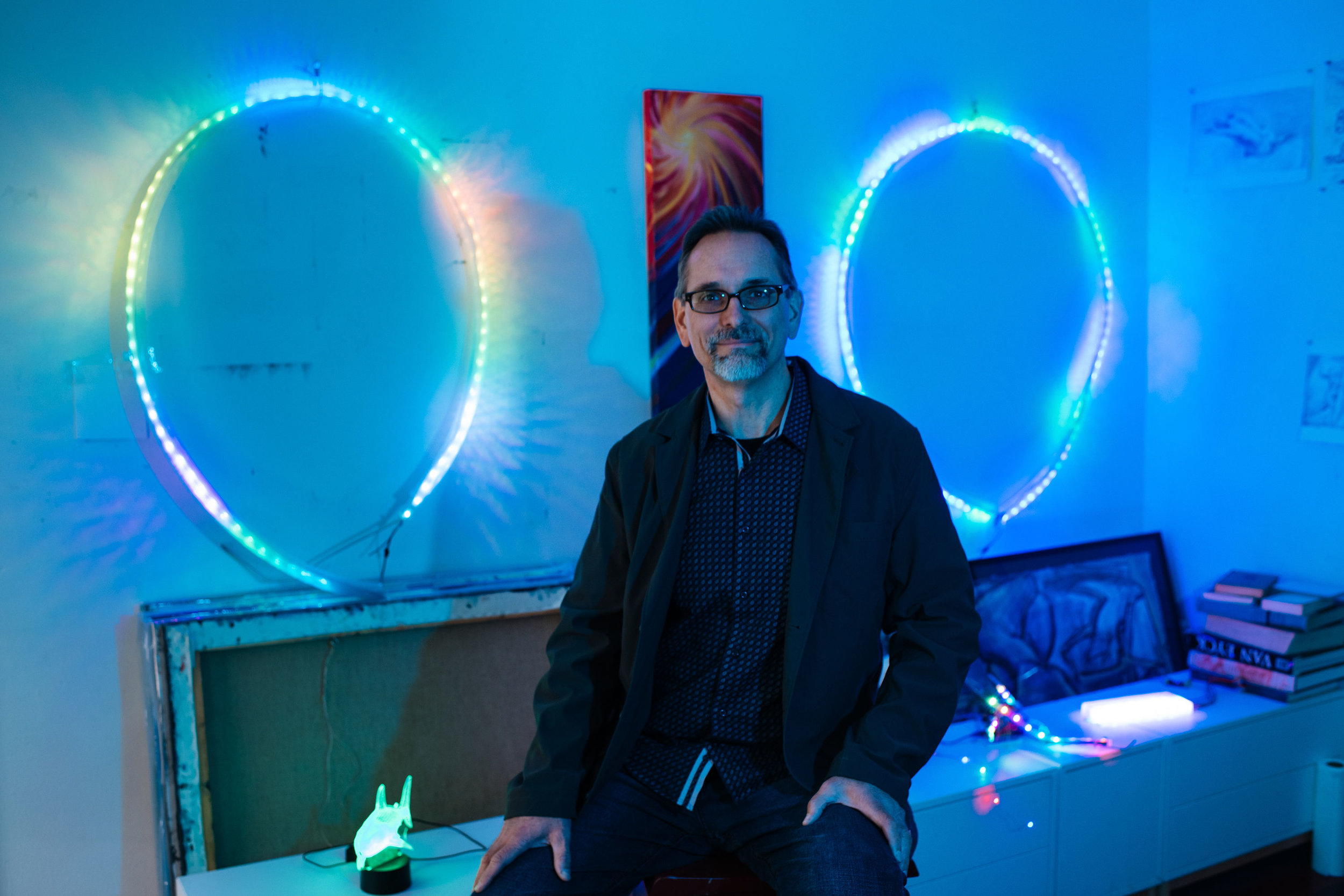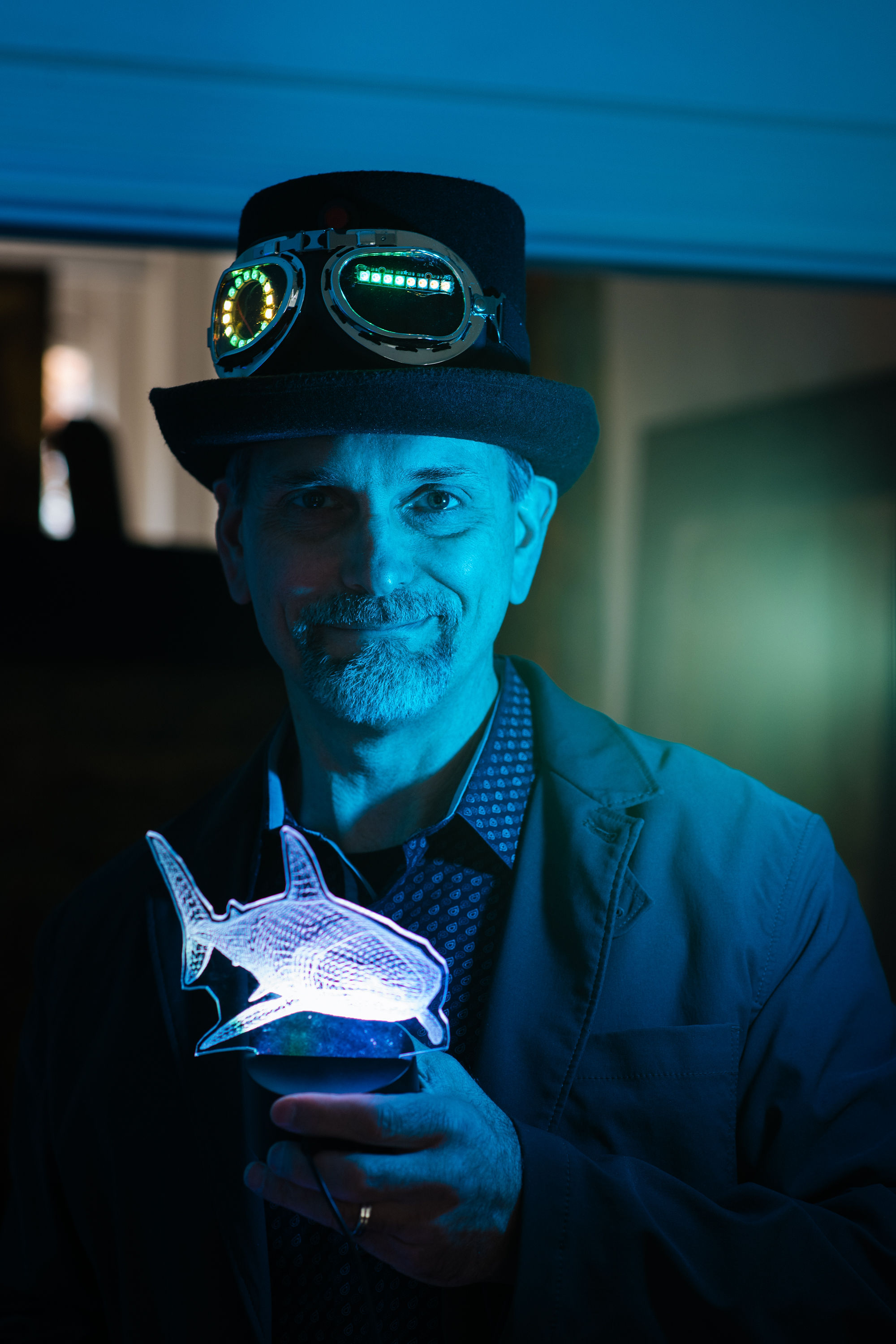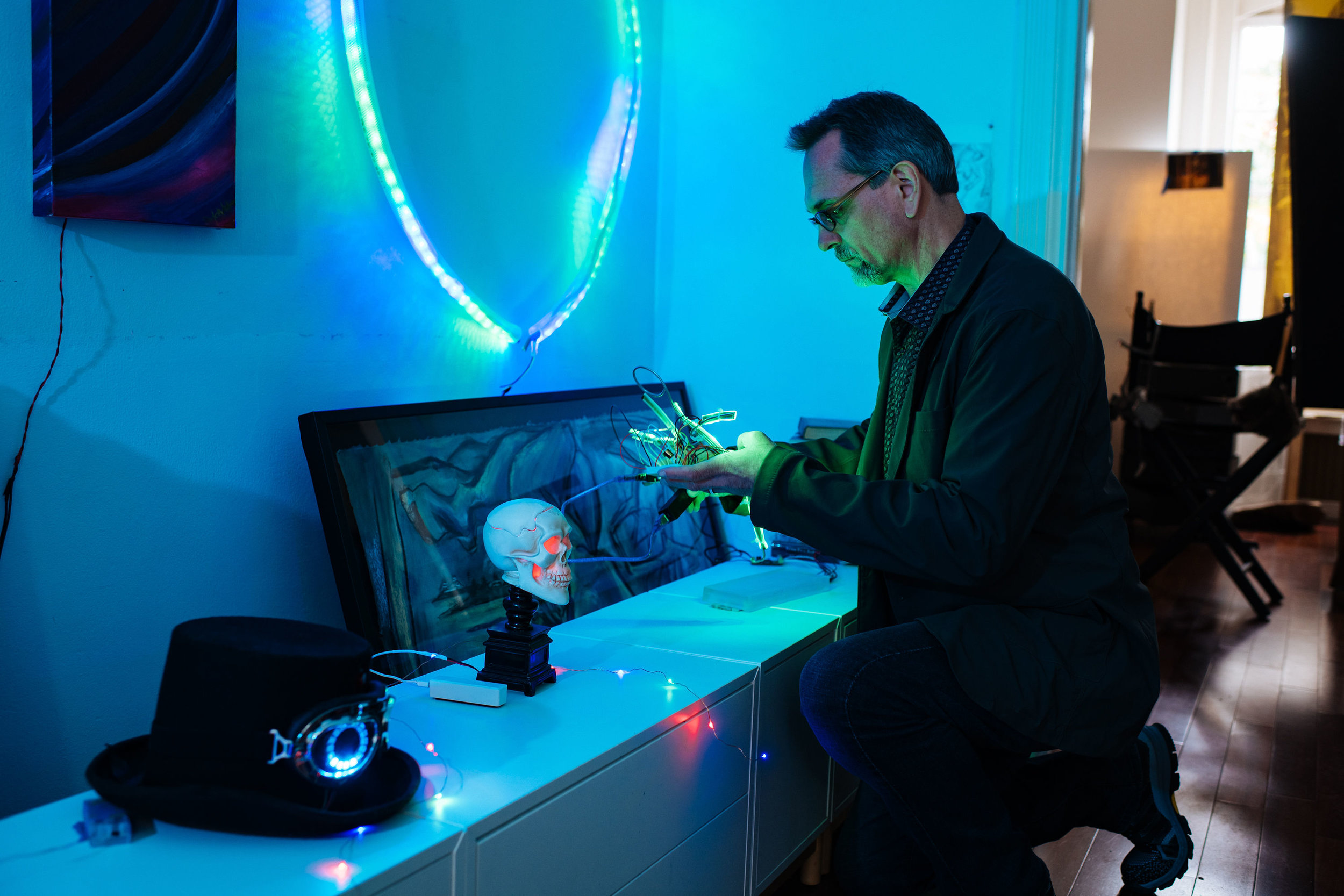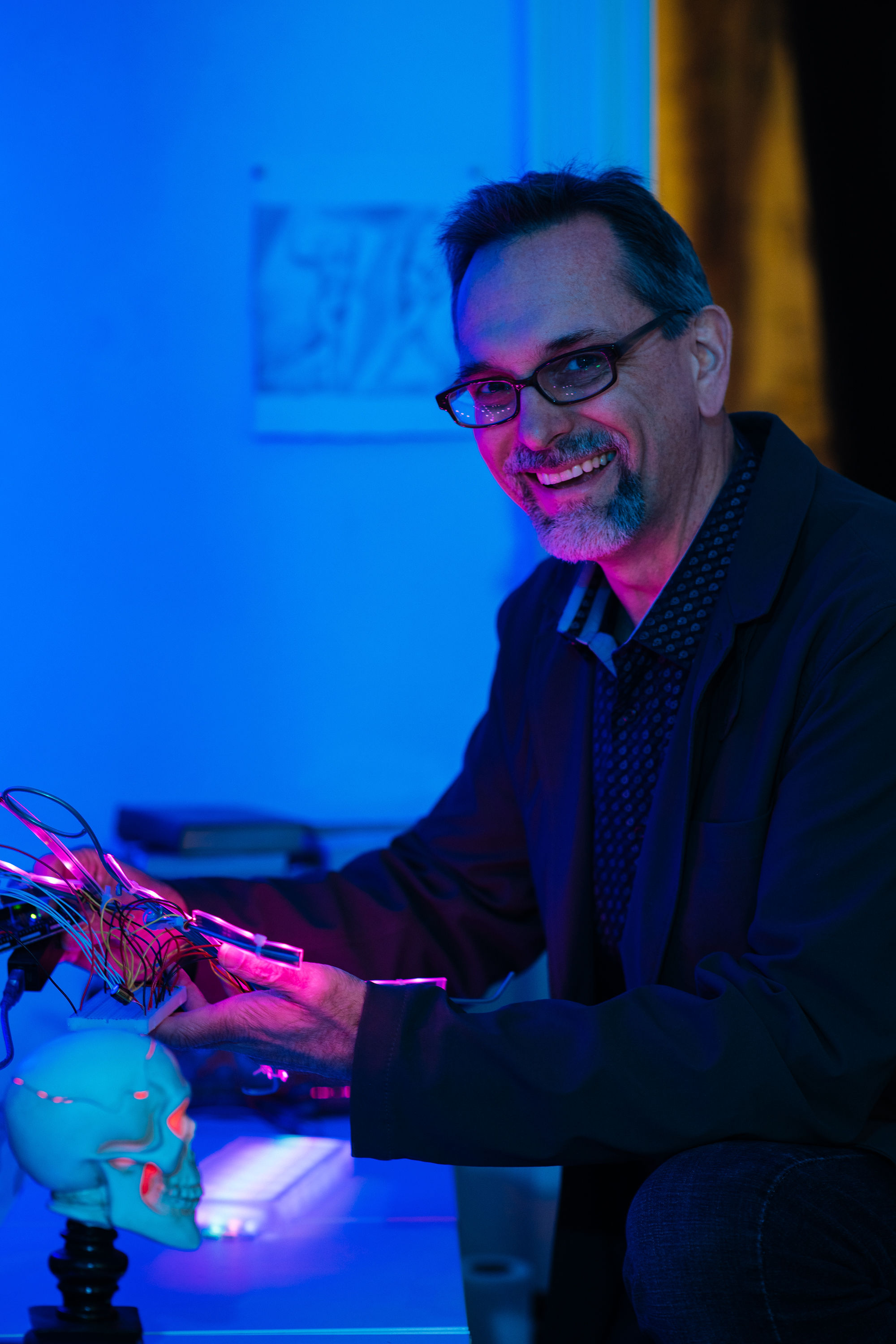‘I Like the Combination of Art and Technology’
Bent over a jumble of glowing LED strands in a dark studio on Book Hill, Johnny Dukovich looks a bit like a mad scientist.
The Pittsburgh native began drawing as a kid, but put his art aside to major in engineering. After the Air Force brought him to DC, Johnny got married, left the military, and moved into software applications.
‘When I left the Air Force I started to explore getting back to my art, and I found this Tuesday night drawing group out of Klagsbrun Studios. It started 35 years ago as a group of friends who all had day jobs and just wanted to draw. The group is amazing because everyone works in totally different styles and mediums. I learned a lot just from watching other people.’
Johnny had been content to draw and paint, but around 2011, he became intrigued by a little device called an Arduino—a programmable, micro controller that can be hooked up to motion sensors.
‘You tell it in the code, ‘When someone walks by, turn on the lights, or turn on the speaker and play a song.’ I started messing with those and thinking how can I incorporate those with art?’
As the price of an Arduino came down to as little as $5, Johnny experimented more—weaving them into paintings, then incorporating sensors. He was drawn to the combination of art and technology, and began teaching classes on the technology.
‘I was in this 20,000-ft. maker’s space in Crystal City, teaching workshops and participating on a prototyping team. They had 3D printers, laser cutters, everything. There were a lot of people creating art, and we would share our ideas. It was kind of like an incubation space, and allowed me to explore these devices even more.’
In 2017, Johnny’s preparation met opportunity. The Georgetown Business Improvement District was preparing for its fourth edition of GLOW—the region’s only curated outdoor public light art experience—and studio owner Micheline Klagsbrun encouraged the Tuesday night drawing group to create their light art to put in front of the Book Hill gallery, with Johnny at the helm.
‘Since we do figure drawing, we decided to do a stick figure that would light up starting at its foot, go up its leg, draw its arm—the lights would light up in sequence as if it’s being drawn. We set up an Instagram account and got pretty good feedback.’
When this year’s official GLOW call for artists was announced, they knew they had to submit. Johnny brainstormed a few concepts with the rest of the group, landing on three, 17-foot interactive figures communicating through Arduinos.
‘There will be a leader and that figure will draw itself and then wave to one of the other figures. That figure will wave back and turn the same color—then wave to the third, who will follow suit. Then they’ll randomly divert from that color. It will happen over and over again. They communicate and agree on a color and then go in different ways. Individuals working together, but also doing their own thing.’
Rainbow Friends will be lit nightly from 5 – 10 pm, December 1 through January 6, near the intersection of Wisconsin Avenue and Reservoir Road. One of the looming figures will reside in a tree; the other two on lamp posts. Visitors can interact with Rainbow Friends by tweeting a color (#red, #blue, etc) to @GlowFigure, and watching as the installation’s lighting follows suit.
To the average person, that’s beyond understanding. But Johnny insists anyone can learn his craft.
‘I’d like to see more people creating art/technology mashups. There’s some old-fashioned coding, but it’s a fairly low bar. Once you get over some of the details of that, you can build from there. Arduino is open-source, which means all the code is free. So is the hardware. There are drawings out there, how-to videos, and a community of people who don’t hold secrets, and love to share their projects. You can use someone else’s project as a starting point. It’s continuously evolving.’
So, too, is Johnny’s journey as an artist. He still paints and draws without supplemental technology, but says he’s increasingly drawn to art that encourages interaction.
‘I want people to feel like they’re part of the whole thing.’
Back in the studio, tinkering with the LED strands, Johnny smiles. He already has an idea for next year.






